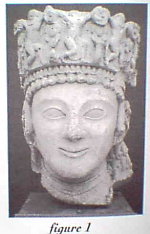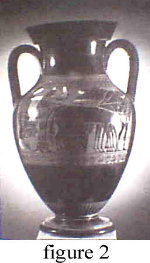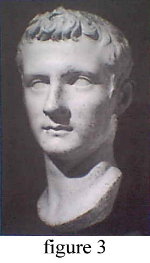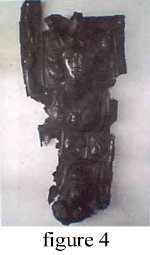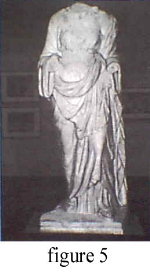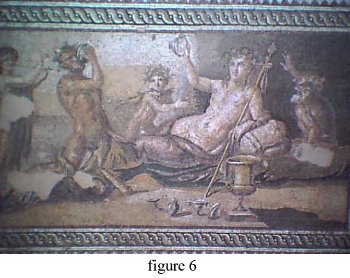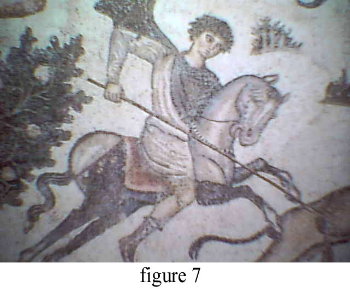 |
||||||||||||||||||||||||||||||||||||||||||||||||||||||||||||||||||||||||
|
|
||||||||||||||||||||||||||||||||||||||||||||||||||||||||||||||||||||||||
Greek and Roman art have been collected from the Museum's founding. High quality and breadth are demonstrated by the early acquisitions, which ranged from a white ground lekythos by the Achilles painter, an exceptional Etruscan terracotta cinerary urn, and the largest Roman mosaic in the nation. In 1905, a bequest from Stephen Salisbury, the museum's primary benefactor, included a group of 70 objects found in the Troad. These had been purchased from Frank Calvert, a British diplomat and amateur archaeologist, who played an important role in the discovery of Troy and who collaborated with Heinrich Schliemann. Under the direction of the museum's first Curator of Greek and Roman art, Dr. Christine Kondoleon, both the Greek and the Roman collections have been recently reinstalled in new galleries. Pieces long in storage are now on display, such as the Calvert glass and a selection of the most interesting bronzes. The purpose of this article is to introduce some of the outstanding highlights of the Museum's Greek and Roman collections, and to present a sneak preview of the most ambitious exhibition this museum has ever undertaken. Antioch: The Lost Ancient City will open October 8, 2000 and run through February 4, 2001.
Probably the most impressive female head from Archaic Cyprus in the United States dominates the back wall of the gallery (fig. 1). The head belonged to an over life-size figure. Some scholars suggest that she represents a priestess for the cult of Aphrodite, others identify her as the goddess herself, who emerged from the sea at Cyprus. Ancient Cypriot art often reveals diverse influences, understandable given its location at the crossroads of many Mediterranean cultures. The multiple ear-piercings, necklaces, and tight curls of her hair reflect Assyrian art, the goddess Hathor in her headdress points to Egypt, and the Archaic smile comes form Greece. A large intact amphora with scenes painted in the black-figure technique is one of the highlights of the Archaic Greek collection. Probably excavated from a tomb in Etruria, the vas bears a careful rendering of Leto mounting her chariot accompanied by her twin children Apollo and Artemis (fig. 2). On the other side of the vase, Dionysos is surrounded by dancing maenads and satyrs, a scene which advertises the vase's function as a storage jar for wine. This fine example is attributed as a late work of the Rycroft painter.
The Roman gallery presents a collection of objects created during the Etruscan and Roman periods by people living in the Roman Empire. Themes explored in this gallery include portraiture art and Roman religion, bronze-working technology, the invention of glass-blowing, and the Romans' emulation of Classical Greek art. Roman Gallery Some of the most famous names from antiquity are represented by the Worcester collection, including rare portraits of Nero and Caligula (fig. 3). The portrait of Nero bears traces of the emperor's over-bearing hubris: iron pins provide evidence that once a crown of sun-rays was fastened to the head, a marker of Nero's aspiration to divinity. Many images of these emperors whose memory was damned were broken or destroyed after their deaths, and indeed there is only one other portrait of Caligula in this country. This second portrait of Caligula (today in the Metropolitan) was found with the Worcester example at Lake Albano in Italy. The finds suggest that pairs of imperial portraits formed part of the private collections of Roman villas.
Several objects in the Roman gallery came to the Museum almost immediately after they were discovered in excavations. In the 1930's, along with Princeton University, the Louvre, the Baltimore Museum of Art and Harvard University, the Worcester Art Museum was a key sponsor of the search for Roman Antioch. Located in southern Turkey near the border of Syria, Antioch was the capital of ancient Syria and the leading city of the Roman East. The city was badly damaged by an earthquake in 526 CE, but a decade of archaeological work revealed about 90 public buildings and private houses, as well as mosaics, pieces of sculpture, coins, lamps and other objects. In the new Roman gallery stands a large statue of Hygieia, goddess of health, excavated from one of the city's public baths (fig. 5). Though her head is now missing, traces of gold leaf were found in the hair that falls onto her shoulders. The feet of Asklepios, god of healing, stand next to her in the gallery.
In the center of the Renaissance Court lies the Worcester Hunt mosaic, the largest Roman mosaic in North America, measuring about 500 square feet (detail, fig. 7). The pavement originally decorated a luxurious sixth-century reception room in Antioch's famous garden suburb of Daphne. The mosaic was brought to Worcester in five massive slabs, each weighing about 2,500 pounds. Different hunting episodes are dispersed over the surface as hunters battle tigers, lions and bears in a woodland setting. Several other mosaics in the collection were excavated from neighboring houses in Daphne: a personification of Ktisis (Foundation), one adorned with peacocks amidst a lush scrolling vine, and a mosaic of rams' heads that reveals Antioch's artistic links with the Persian Empire.
Upcoming exhibition: ANTIOCH: THE LOST ANCIENT CITY Many of these pavements will be featured in the upcoming exhibition, Antioch: The Lost Ancient City (October 8, 2000-February 4, 2001). This exhibition will be the most ambitious in the Museum’s history, and will tour to the Cleveland Museum of Art (March 21-June 3, 2001) and to the Baltimore Museum of Art (Sept. 16-Dec. 30, 2001). Curated by Dr. Christine Kondoleon, Antioch: The Lost Ancient City will present approximately 160 objects from 25 U.S. and European collections, including mosaics, sculpture, glassware, silver, and inscriptions. Also featured will be the recent gift from Professors Cornelius and Emily Vermeule of over 100 coins minted at Antioch, an ensemble that traces much of the Hellenistic, Roman and early Byzantine history of the city. For the first time since the excavations, these finds will be reunited and the cosmopolitan ancient city of Antioch brought to life once again in galleries devoted to the City and the People, Water and Entertainment, the Roman House, and Religion. The exhibition will evoke the luxury of the domestic settings of the elite as well as the street life of a polyglot urban metropolis.
Museum Information The Museum is located at 55 Salisbury Street in Worcester. Hours are Wednesday through Sunday 11am-5pm, and Saturday 10am-5pm. For directions, more information, or to schedule a tour of the collections or the Antioch exhibition, call 508-799-4406 ext. 3007, or visit the Museum's web-site at www.worcesterart.org. |
||||||||||||||||||||||||||||||||||||||||||||||||||||||||||||||||||||||||
|
|
||||||||||||||||||||||||||||||||||||||||||||||||||||||||||||||||||||||||
